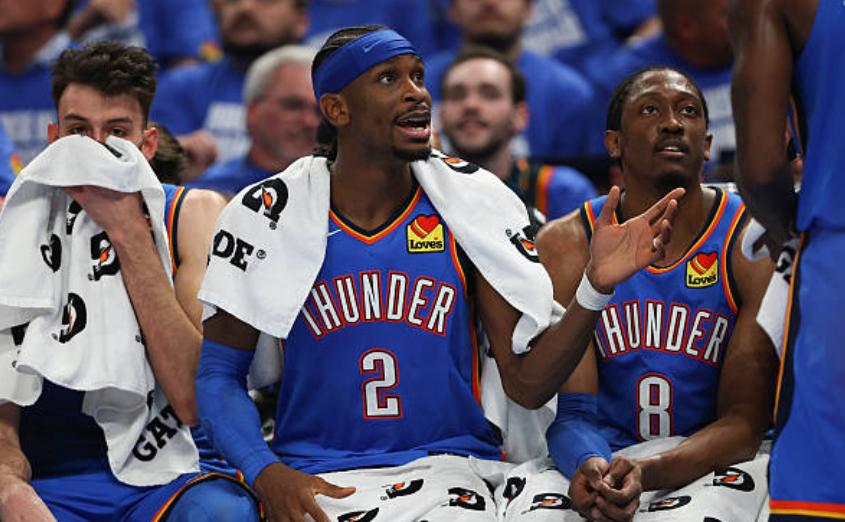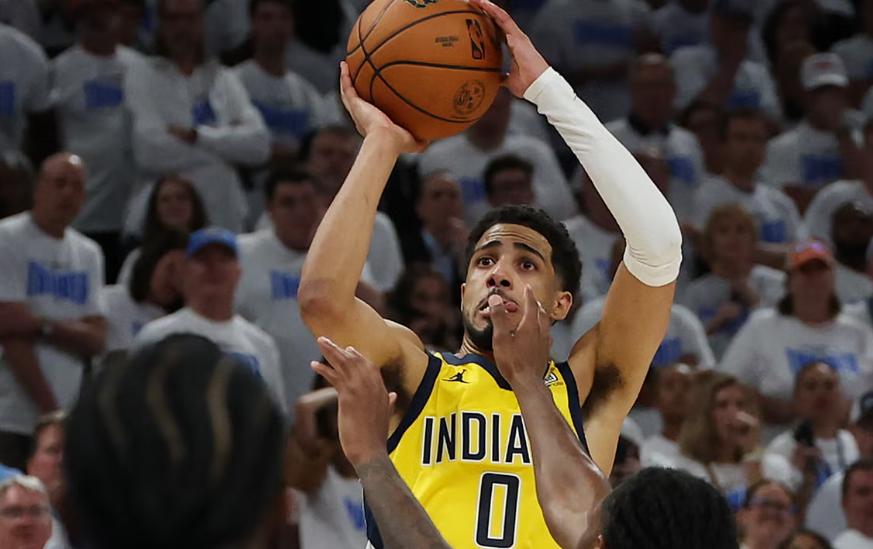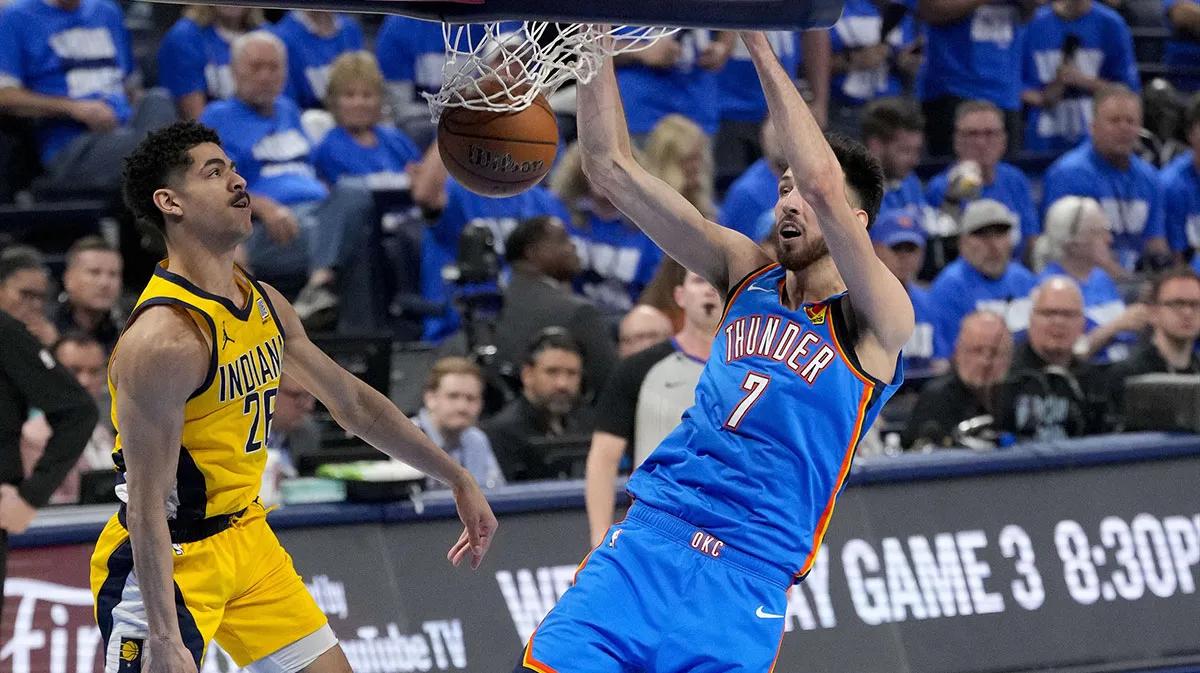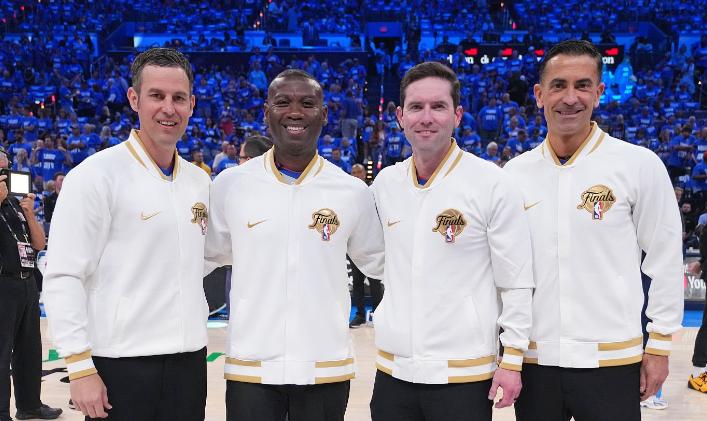The official website lists the four major highlights of the finals G3: Harry needs to be more aggressive, and the referee scale may change
On June 11, Beijing time, the NBA Finals G3 will start at 8:30 a.m. Beijing time on June 12, and the current total score is the Thunder 1-1 Pacers. What kind of plot will be staged in G3 of the finals? The official website of the NBA lists the four major highlights of the Finals G3 -


1. When Alexander is off the court, the Pacers need to take their chances
The Pacers need to turn the Thunder's "non-Alexandria period" into a key breakaway in the series. The popular "presence/absence" is an intuitive analytics tool that tracks the offensive and defensive efficiency of a team when players are on and off the pitch.
This set of stats is widely known by Jokic — the legendary center of the Nuggets always seems to be lacking in enough helpers. There are many reasons why Jokic has won the MVP three times, but one should not be overlooked: When he's on the floor, the Nuggets typically outscore opponents by about 547 points, while when he's off the court, they're net minus about 439 points. The contrast is especially pronounced in the 2023 championship campaign, where fans fear that the Nuggets will collapse in an instant whenever the big man needs to take a break.

Alexander won the MVP this season, but he didn't have to rely on such "value metrics." When the scoring champion is on the floor, the Thunder outscore their opponents by 16.7 points per 100 possessions, and even when he is off, the team still outscores by 5.2 points per 100 possessions — a net efficiency that ranks fourth in the league and underscores the Thunder's ability to excel even without a core.
This pattern has continued so far in the playoffs: Alexander has won by 12.8 points per 100 possessions when he is on the court and 6.9 points per 100 possessions when he is out on the court. In the first two games of the Finals, when Alexander was on the floor, the Thunder beat the Pacers by 8 points; When he went off, the Thunder also outscored the Pacers by seven points.
The Pacers must improve on this "7-point" disadvantage. Whether Alexander's departure is led by Jalen Williams, Wiggins, Caruso or another player, the Pacers will need to take the initiative to gain the upper hand, at least for this brief period. They need to turn the energy that limits Alexander's into a boost on the offensive end.
In Game 1, the Pacers netted by four points in the 8:26 time Alexander was off the court, and they need to replicate that performance over and over again — after all, if they can't win even when Alexander isn't on the court, how can they win when he's on the court?
2. Haliburton needs to be more aggressive
It sounds like a simple half-time analysis of "the stars have to do more" or "they have to step up". But the key question is: how to do it?

For a pass-first point guard like Haliburton, forcing the game to dominate is no easy feat—he relies on his teammates to run to open space and hit shots to create scoring opportunities for himself. He's not a "productive goalscorer" like Alexander (who can take 10 more shots to keep the team alive).
Still, Haliburton scored 14 and 17 points on 13 shots in the first two games of the Finals, with 12 points in Game 2 belatedly until the final quarter — which was not enough. In the playoffs, when the Pacers guard scored at least 20 points, the team had a 7-1 record; When the score is under 20 points, it is only 6 wins and 4 losses.
The same goes for the number of shots: 8-1 for 15 or more, 5-4 for fewer than 15. What's more, he hasn't made a single free throw in the Finals so far (he averaged 3.5 in the previous 16 playoff games).
So, no matter how he does it — having Haliburton catch the ball on the go (which the Thunder are often doing at the moment), or passing the ball, cutting in and receiving the ball — he'll have to be more aggressive on the scoring end and at least a little more aggressive.
3. Holmgren's defense doesn't stop at protecting the basket
Holmgren had a mediocre opening game of the Finals, but his Game 2 was a significant boost — much more than his 15 points, six rebounds and one block.

The 2.16m man showed his all-around defensive prowess on Sunday: he and his team-mates never shied away from letting him switch to smaller, faster players, as Holmgren's footwork and reach advantage allowed him to interfere with shots without having to get close to the attacker.
He is also able to stay away from the ball carrier as needed, and knows that the box will be fully protected when he is on the pitch at the same time as centre-forward Hartenstein. Coach Daigneault also praised the two big men for their defense against the Pacers' pick-and-roll in Game 2.
4. Pay attention to the scale of the whistle
Many Pacers fans believe that the Thunder were allowed to play a physical and hand-distracting style of defense in the first two home courts, while the Pacers did not get the same scale - this may certainly be the subjective feeling of the home fans, but the "fame" of the two teams may have subtly influenced some of the free throws.

The buzzing atmosphere at the Thunder's home court could also play a role. But now it's a different story: Games 3 and 4 will be played on the Pacers' home court, and the Indiana home fans will be just as enthusiastic (if not on a slightly lower volume).
The stats speak for themselves: So far, the Thunder have been whistled for 39 fouls, made 57 free throws and hit 50 of them; The Pacers had 47 fouls, 47 free throws and hit 34 shots. The Thunder scored 16 more points from the free-throw line and just 15 points in the two games — a difference that was the pivotal part of the series.










 Links
Links
 Contact
Contact
 App
App


